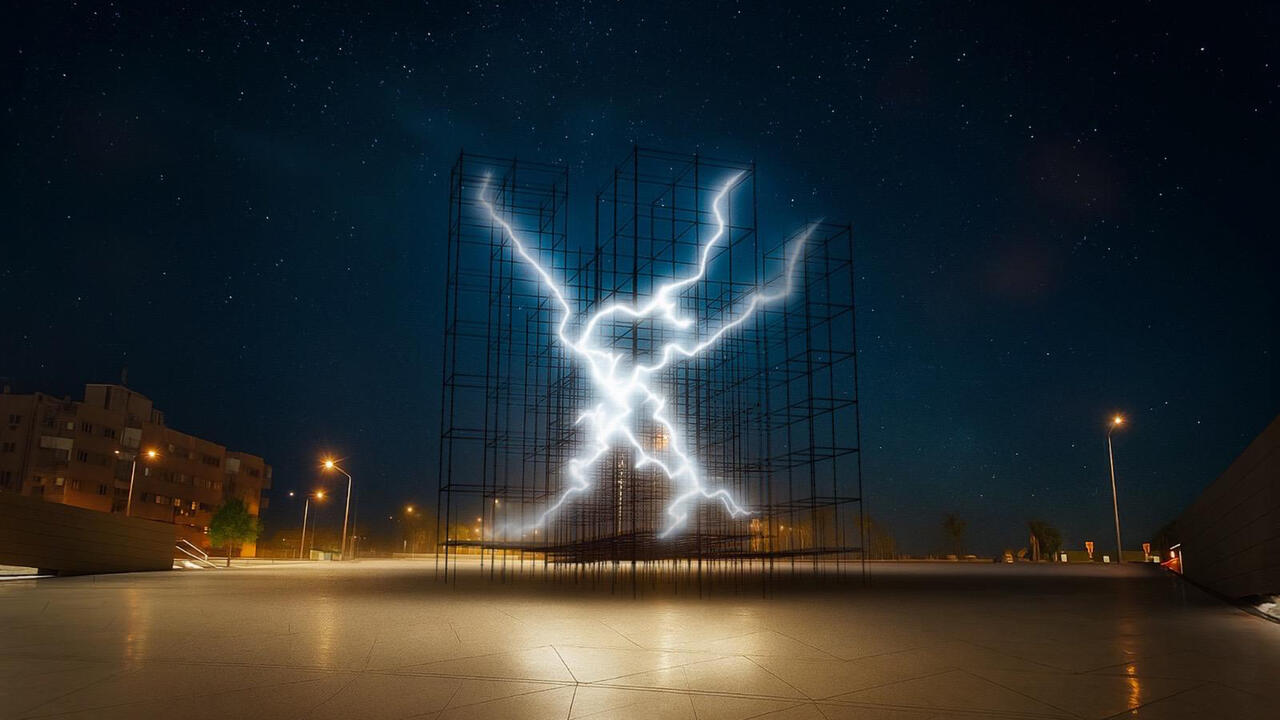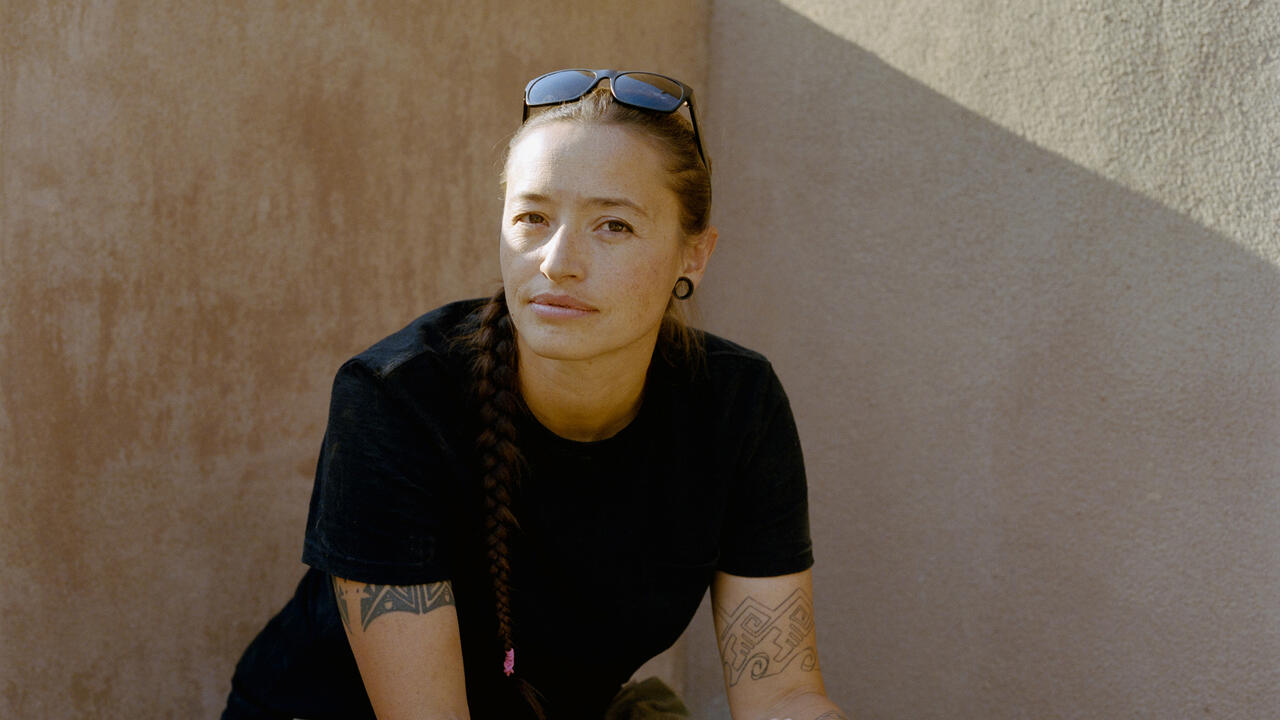Skulptur Projekte Münster’s New Directors Haven’t Quit on Germany
Members of the collective What, How and For Whom/WHW on public art, Kasper König’s legacy and the safeguarding of artistic freedoms
Members of the collective What, How and For Whom/WHW on public art, Kasper König’s legacy and the safeguarding of artistic freedoms

Formed 25 years ago in Zagreb, after the disintegration of Yugoslavia, What, How & for Whom/WHW is a four-person curatorial collective named after the three basic questions of economic organization. Last month, three of its members – Ivet Ćurlin, Nataša Ilić and Sabina Sabolović – were announced as the new artistic directors of Skulptur Projekte Münster. This is the first time that the public art exhibition, which takes place every ten years throughout the German city of Münster, will be led by an all-female team. Their appointment comes at a time of turmoil in the country’s art scene as pro-Palestinian artists and cultural workers are locked in an intense battle with the government over its unwavering support for Israel since 7 October 2023.
Chloe Stead It’s an incredibly tense time in Germany for cultural workers and artists alike. What made you decide to apply for this position?
Nataša Ilić We were invited to apply and, after Kunsthalle Wien [of which they were artistic directors from 2019–24], we felt it could be interesting to work on a longer project in the public sphere. It’s called Skulptur Projekte, but it’s not only about sculpture – at least, not for us.
Sabina Sabolović In a moment where we are surrounded by so much tension and violence, the possibility of talking to communities who don’t necessarily go to museums or galleries feels very precious to us.

CS Your tenure at Kunsthalle Wien was criticized in the German-language media for being too niche and overly theoretical. There were also accusations that audience numbers had fallen. Is there anything you wish to take from this experience when it comes to engaging the general public in Münster?
SS The numbers were no different than for the previous director who, unlike us, didn’t work under pandemic conditions for more than half of their term. I think the problem was that the people who came don’t count as part of the Viennese art world or in the political sphere. One of the problems, as we see it, is that there is a clash between how cultural policy-makers and institutional directors view Vienna and how the city really is. Vienna is a vibrant migrant city but, when we arrived, we felt that there wasn’t a lot of engagement with those communities. One very positive experience we had was that, under our programme, people began visiting the Kunsthalle who had never been before.
NI 50 percent of the population of Vienna comes from a migrant background. You’d only call [a programme responding to] that reality ‘niche’ if you had a very narrow perspective.
CS What measures did you take to attract a different type of public?
Ivet Ćurlin The first thing we did when we arrived in Vienna was to meet with activist groups, social-advocacy groups, people who were already working with different communities. But it was also a question of programming and outreach. Our exhibitions were trying to engage with the lived experiences of the various populations of Vienna in ways other than a programme that mostly just shows very established artists, already approved by the Western establishments and markets.
NI There is no quick fix. It’s about patience and modesty. It’s about being happy if five [new] people show up because the next time they’ll bring their friends and family. When Kunsthalle Wien decided not to renew our contract, visitor numbers were actually back to pre-pandemic levels and starting to grow.

CS The announcement of your appointment closely followed the death in August of Kasper König, who cofounded Skulptur Projekte and was artistic director in 2015 and 2017. Did you get the chance to meet him?
SS We knew Kasper for many decades, but we only managed to speak to him once after we’d been selected. In that brief conversation, he stressed the importance of preserving Skulptur Projekte as a project for artists. It’s a rare opportunity to do something truly ambitious because all the works are new commissions. We feel that, although he’s gone, it’s impossible not to be in dialogue with the legacy he created 50 years ago. That said, Kasper was also vocal about the fact that he felt that his successors should do something new.
CS The next edition isn’t until 2027, but what can you already tell us about the direction you want to take?
SS Past editions of Skulptur Projekte tended to be dominated by Western and male artists, which we feel excluded a lot of voices. This was already changing by the last edition, in 2017, but we will continue to bring new perspectives.
The question of how to produce an exhibition of this scale while keeping ecological concerns in mind is a big challenge.
IĆ We would also like to address the ways in which we can see audience engagement has changed over the last ten years, particularly post pandemic, and how digital media are now influencing audience relationships. Those would be our key concerns.
NI We are also interested in taking the exhibition into the surrounding rural areas. When we looked into the history of Skulptur Projekte, we found that agricultural politics, which is an increasingly significant topic within the European Union, wasn’t really touched on.
SS The question of how to produce an exhibition of this scale while keeping ecological concerns in mind is a big challenge. We don’t have a magic formula, but we know it’s urgent for us to put our heads together – possibly in a think-tank with scientists and ecologists – to address this issue.

CS During the press conference announcing your appointment, you denounced the spate of exhibition cancellations in Germany that have occurred since 7 October 2023 and spoke of the importance of artistic freedom. Should we understand from this that you will be open to inviting artists who have been vocal in supporting Palestinian statehood and criticizing the Israeli government’s conduct in Gaza?
SS Of course we will, if what those hypothetical artists are doing makes sense for the project as a whole. We won’t be thoughtlessly provocative but precise and considered. Recently, decisions that concern art projects in Germany have been made based on misinterpretation of these projects by the media or politicians, and that’s something we want to protect art and artists from.
CS There are countless artists based in Germany – including many anti-Zionist, Jewish artists – who have been targeted by the media, politicians and trolls because of their political beliefs. What can you do to support artists in such a charged atmosphere?
IĆ You can’t stop attacks, but you can stand behind the artist and stick to your guns if you believe in what they are making.
SS We can protect and advocate for them in the political circles to which we have access. We will be working with around 30 artists on a long-term basis who will be in Münster and working with people there, which I hope means local constituencies will develop will who support the projects, regardless of political decrees. Our hope is that, through transparent dialogue and exchange, we can ensure the exhibition is both grounded and uncompromised.

CS In the press conference, you also spoke of ‘red lines’ that you would not cross, such as including artworks that engage in antisemitism, racism and Islamophobia. But who gets to decide what is antisemitic, racist or Islamophobic in such a divisive time?
NI Firstly, I will say that we have never worked, and will never work, with artists who engage in any form of racist or discriminatory rhetoric. But, in answer to your question: we will be establishing clear protocols, which will involve putting a committee in place, but ultimately we will get to decide. I have complete faith in us as a collective, in the integrity of the artists and – if that doesn’t work – in the legal system.
IĆ The collective started after the violent breakup of Yugoslavia. It was a very difficult time, with intense nationalism and xenophobia. As a result, we are very sensitive to hate speech. It is simply not something that we would ever allow.
You can’t stop attacks, but you can stand behind the artist and stick to your guns if you believe in what they are making.
CS Alongside exhibition cancellations, we have also seen activist groups, like Strike Germany, organize boycotts of cultural institutions in protest at what they see as the country’s McCarthyite policies. Given this, why should international artists take part in your exhibition?
NI We respect and understand the position of Strike Germany, but we don’t think it is the only position. Put simply: we are not boycotting because we haven’t given up on Germany – not yet. Things can still play out differently.
SS As we already mentioned, we have been in close proximity to war and genocide, and this makes us strong supporters of uncontested rights to all. In our negotiations for this position, and again at the press conference, we made it very clear that our firm belief in internationalism, justice and equality are at the very heart of this project.
Main image: Claes Oldenburg, Giant Pool Balls, 1977, installation view. Photograph: Hubertus Huvermann





















